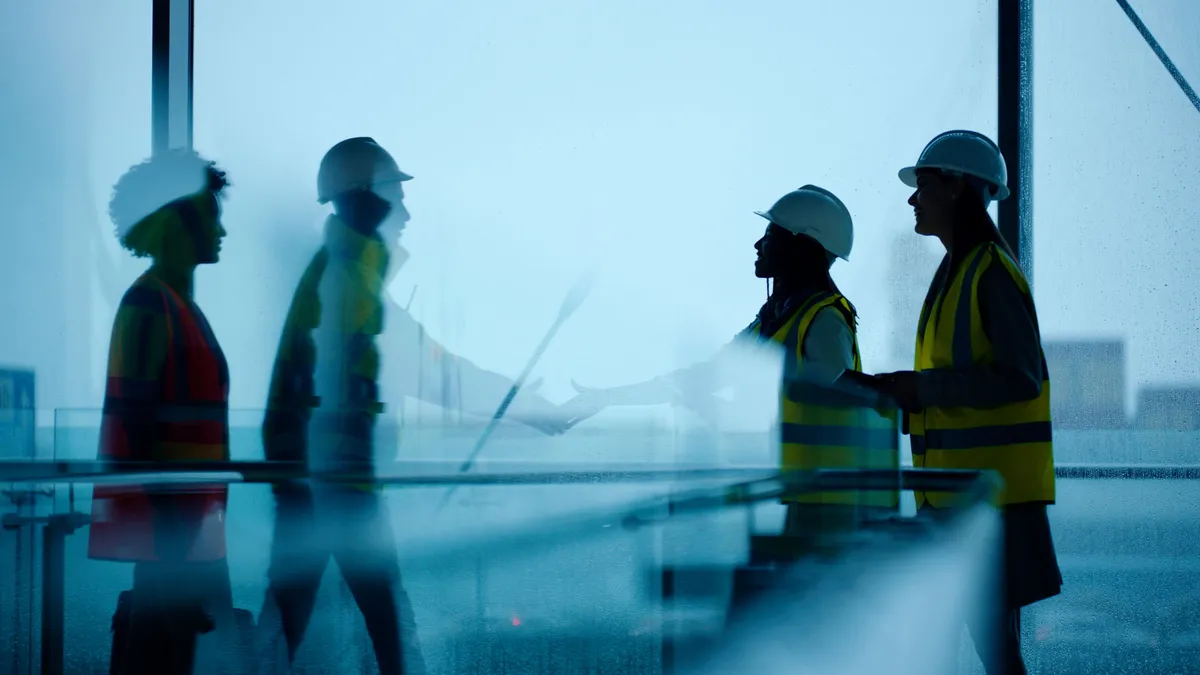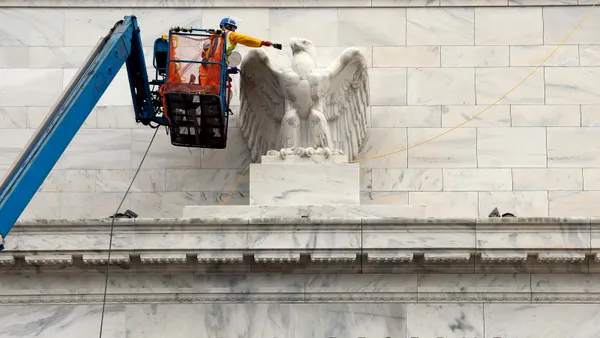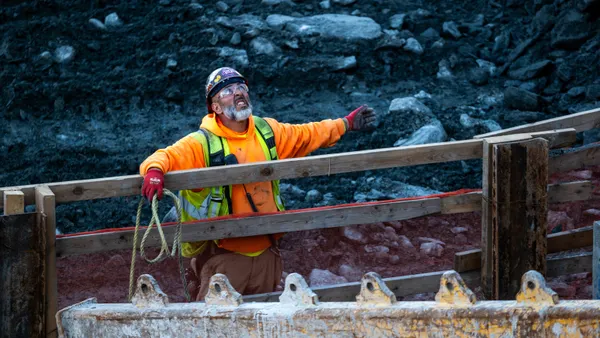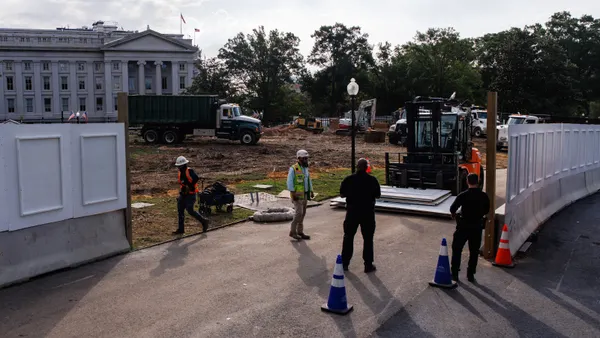Dive Brief:
- The construction industry needs to attract an estimated 439,000 net new workers this year in order to meet anticipated demand for construction services, according to a model from Associated Builders and Contractors released Friday.
- That gap is sizable, but is still smaller than the predicted labor gap from the last two years due to construction spending being at its slowest pace in years, said Anirban Basu, chief economist for ABC. In 2024, ABC’s model indicated the industry needed 501,000 net new workers.
- Despite the improved labor outlook compared to previous years, “If you’re a builder, particularly a nonresidential builder, what this indicates is that your main challenge in 2025 will continue to be finding workers to do the work,” Basu told Construction Dive.
Dive Insight:
ABC’s proprietary model uses a historical relationship between inflation-adjusted construction spending growth data from the Census Bureau’s Construction Put in Place Survey and payroll construction employment, sourced from the Bureau of Labor Statistics. It then converts anticipated increases in construction outlays into demand for construction workers.
About $1 billion of additional construction spending creates about 3,500 additional jobs, per ABC’s model.
Basu acknowledged the numbers could be “overly conservative,” as the consensus forecast has construction spending increasing by less than 3% this year, but that forecast has underestimated growth each of the last three years. If inflation dissipates, borrowing costs will go down and construction will outpace that prediction, he said.
Makeup and structures
For the first time since 2011, the median construction worker is younger than 42, Basu said. That will mean fewer retirements this year, but also means an increasingly large section of the workforce lacks experience and is comparatively unskilled.
“That’s one of the reasons that the aggregate workforce shortage number is falling, is because the industry has hired a lot of people at the lower skilled part of the spectrum,” Basu said.
At the same time, Basu said two major factors compound the construction labor shortage. The first, is the cyclical nature of the economy, where demand rises and falls. For now, demand in many sectors, such as single-family, multifamily and office, is relatively reduced, while other sectors are booming.
The other factor is that the U.S. hasn’t educated and produced enough blue collar workers in recent years for jobs in industries like construction and manufacturing.
Still, Basu expressed optimism that that could shift, as more people gradually consider and pursue in-demand jobs in the trades.
“Like all things, people begin to realize the economy is evolving and they begin to respond to that,” Basu said. “The Trump administration could do a lot in terms of trying to expedite the creation of the 21st century industrial workforce.”
Immigration uncertainties
A critical part of 2025’s labor landscape rests on President Donald Trump’s immigration policy. Trump has already taken anti-immigration actions, such as seeking to end birthright citizenship and permitting agencies to make arrests at schools and churches, AP News reported.
“Faster-than-expected immigration over the past few years has also bolstered labor supply, and potential changes to immigration policy will likely constrain worker availability,” Basu said in the report.
But some uncertainty remains, he said, as it is unclear what actions the current administration will take and what legal or logistical challenges it will face as a result.
ABC CEO Mike Bellaman called for a merit-based, market-based visa system, pledging in the release that the group would work with the federal government to “create a visa system that allows people who want to contribute to society and work legally in the construction industry to do so.”















